Lexicology Lecture 2 English vocabulary as a
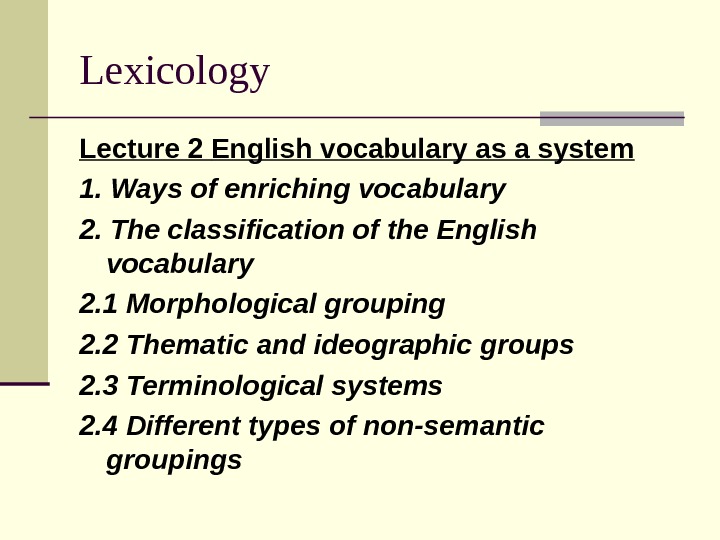
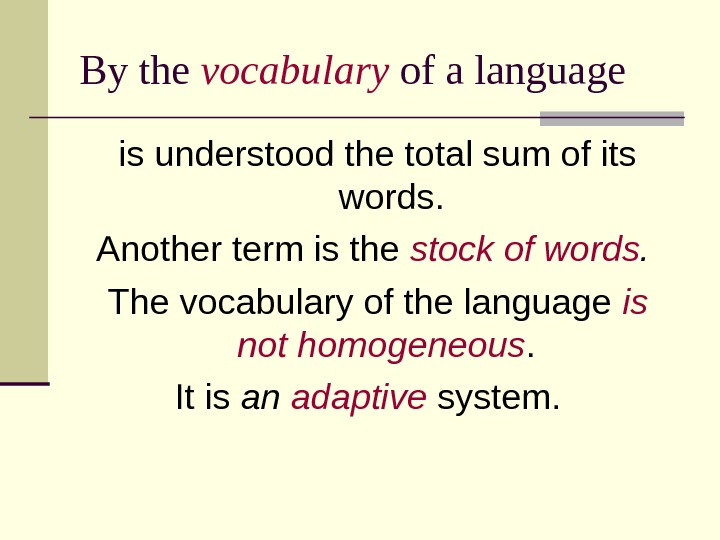
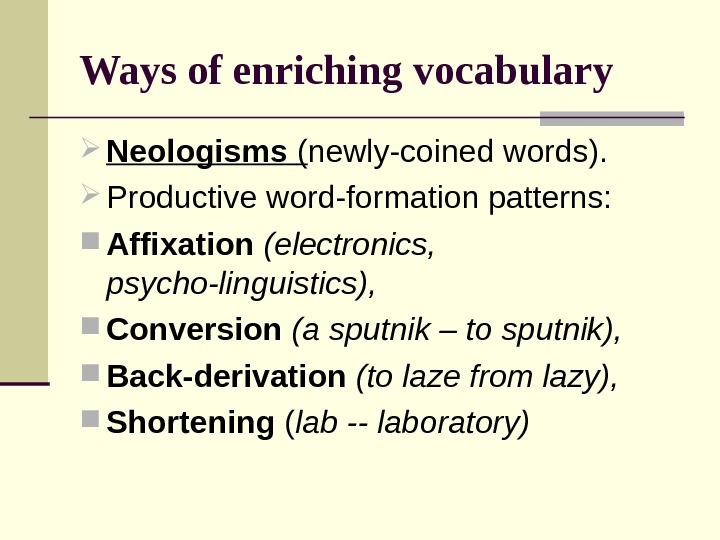
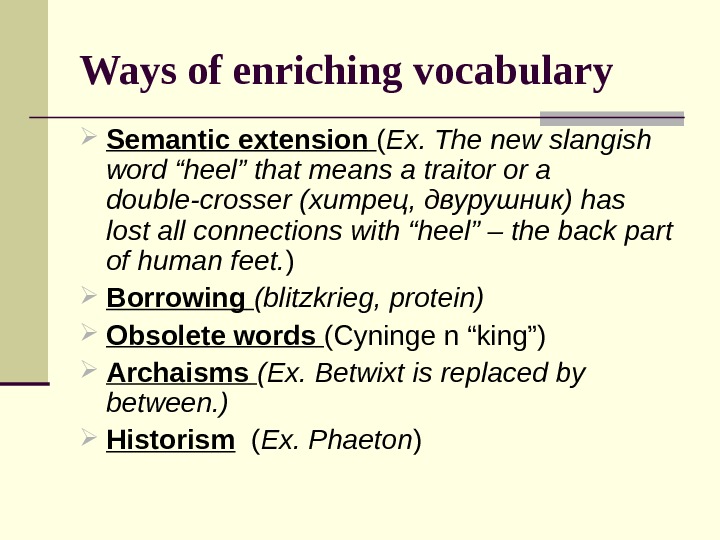
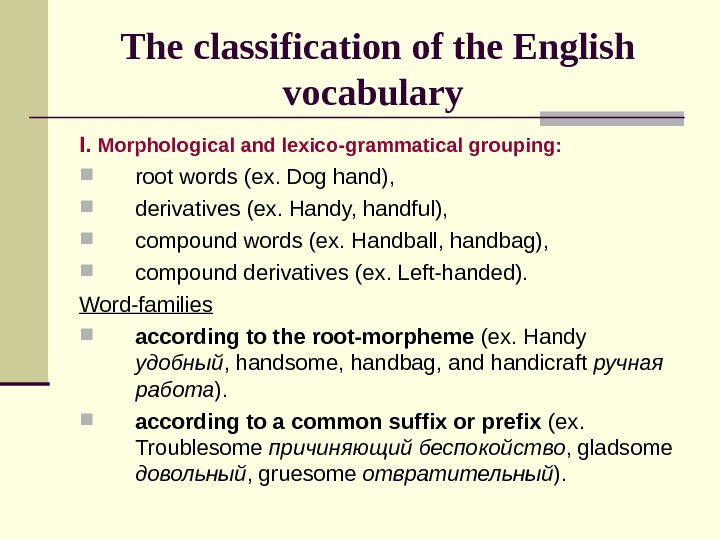
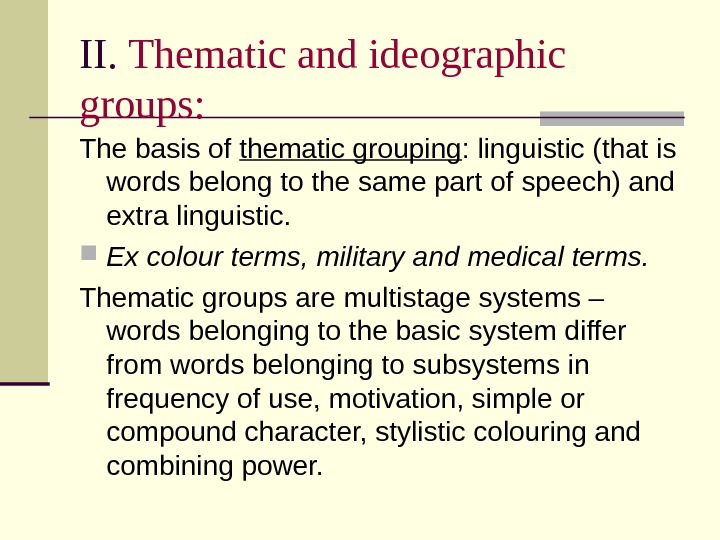
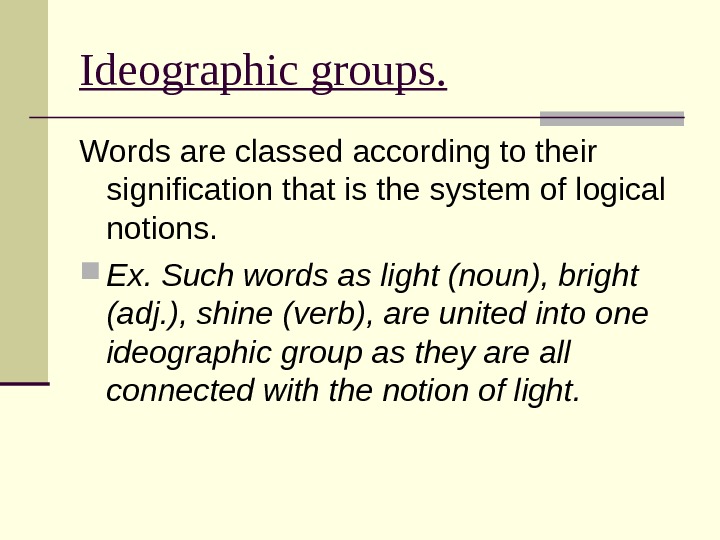
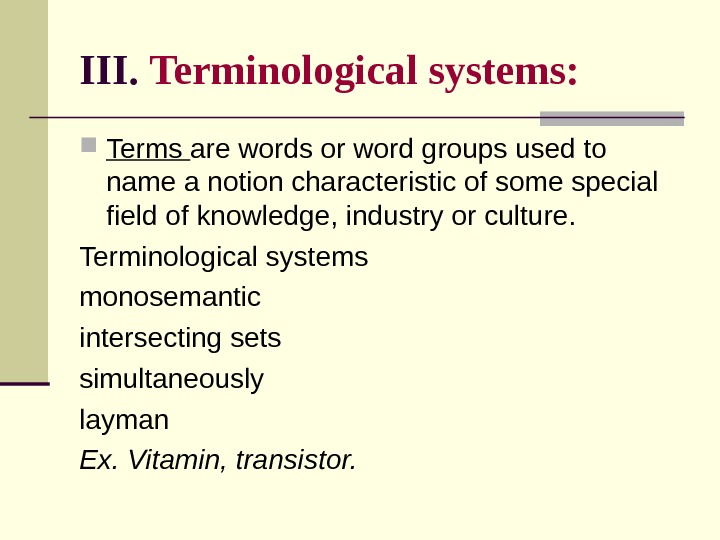
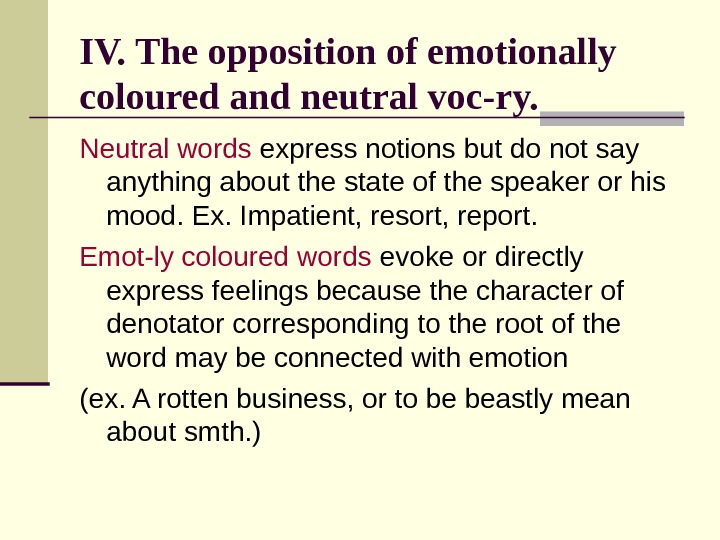
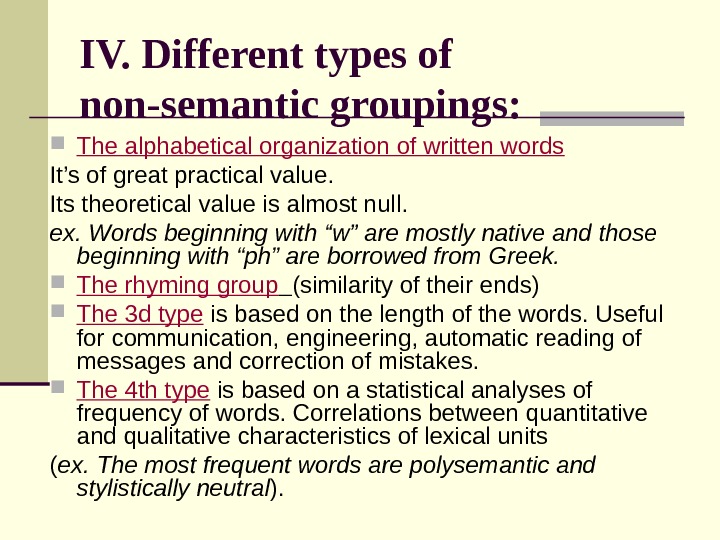
- Размер: 185 Кб
- Количество слайдов: 10
Описание презентации Lexicology Lecture 2 English vocabulary as a по слайдам
 Lexicology Lecture 2 English vocabulary as a system 1. Ways of enriching vocabulary 2. The classification of the English vocabulary 2. 1 Morphological grouping 2. 2 Thematic and ideographic groups 2. 3 Terminological systems 2. 4 Different types of non-semantic groupings
Lexicology Lecture 2 English vocabulary as a system 1. Ways of enriching vocabulary 2. The classification of the English vocabulary 2. 1 Morphological grouping 2. 2 Thematic and ideographic groups 2. 3 Terminological systems 2. 4 Different types of non-semantic groupings
 By the vocabulary of a language is understood the total sum of its words. Another term is the stock of words. The vocabulary of the language is not homogeneous. It is an adaptive system.
By the vocabulary of a language is understood the total sum of its words. Another term is the stock of words. The vocabulary of the language is not homogeneous. It is an adaptive system.
 Ways of enriching vocabulary Neologisms ( newly-coined words). Productive word-formation patterns: Affixation (electronics, psycho-linguistics), Conversion (a sputnik – to sputnik), Back-derivation (to laze from lazy), Shortening ( lab — laboratory)
Ways of enriching vocabulary Neologisms ( newly-coined words). Productive word-formation patterns: Affixation (electronics, psycho-linguistics), Conversion (a sputnik – to sputnik), Back-derivation (to laze from lazy), Shortening ( lab — laboratory)
 Ways of enriching vocabulary Semantic extension ( Ex. The new slangish word “heel” that means a traitor or a double-crosser ( хитрец , двурушник ) has lost all connections with “heel” – the back part of human feet. ) Borrowing (blitzkrieg, protein) Obsolete words (Cyninge n “king”) Archaisms (Ex. Betwixt is replaced by between. ) Historism ( Ex. Phaeton )
Ways of enriching vocabulary Semantic extension ( Ex. The new slangish word “heel” that means a traitor or a double-crosser ( хитрец , двурушник ) has lost all connections with “heel” – the back part of human feet. ) Borrowing (blitzkrieg, protein) Obsolete words (Cyninge n “king”) Archaisms (Ex. Betwixt is replaced by between. ) Historism ( Ex. Phaeton )
 The classification of the English vocabulary I. Morphological and lexico-grammatical grouping: root words (ex. Dog hand), derivatives (ex. Handy, handful), compound words (ex. Handball, handbag), compound derivatives (ex. Left-handed). Word-families according to the root-morpheme (ex. Handy удобный , handsome, handbag, and handicraft ручная работа ). according to a common suffix or prefix (ex. Troublesome причиняющий беспокойство , gladsome довольный , gruesome отвратительный ).
The classification of the English vocabulary I. Morphological and lexico-grammatical grouping: root words (ex. Dog hand), derivatives (ex. Handy, handful), compound words (ex. Handball, handbag), compound derivatives (ex. Left-handed). Word-families according to the root-morpheme (ex. Handy удобный , handsome, handbag, and handicraft ручная работа ). according to a common suffix or prefix (ex. Troublesome причиняющий беспокойство , gladsome довольный , gruesome отвратительный ).
 II. Thematic and ideographic groups: The basis of thematic grouping : linguistic (that is words belong to the same part of speech) and extra linguistic. Ex colour terms, military and medical terms. Thematic groups are multistage systems – words belonging to the basic system differ from words belonging to subsystems in frequency of use, motivation, simple or compound character, stylistic colouring and combining power.
II. Thematic and ideographic groups: The basis of thematic grouping : linguistic (that is words belong to the same part of speech) and extra linguistic. Ex colour terms, military and medical terms. Thematic groups are multistage systems – words belonging to the basic system differ from words belonging to subsystems in frequency of use, motivation, simple or compound character, stylistic colouring and combining power.
 Ideographic groups. Words are classed according to their signification that is the system of logical notions. Ex. Such words as light (noun), bright (adj. ), shine (verb), are united into one ideographic group as they are all connected with the notion of light.
Ideographic groups. Words are classed according to their signification that is the system of logical notions. Ex. Such words as light (noun), bright (adj. ), shine (verb), are united into one ideographic group as they are all connected with the notion of light.
 III. Terminological systems: Terms are words or word groups used to name a notion characteristic of some special field of knowledge, industry or culture. Terminological systems monosemantic intersecting sets simultaneously layman Ex. Vitamin, transistor.
III. Terminological systems: Terms are words or word groups used to name a notion characteristic of some special field of knowledge, industry or culture. Terminological systems monosemantic intersecting sets simultaneously layman Ex. Vitamin, transistor.
 IV. The opposition of emotionally coloured and neutral voc-ry. Neutral words express notions but do not say anything about the state of the speaker or his mood. Ex. Impatient, resort, report. Emot-ly coloured words evoke or directly express feelings because the character of denotator corresponding to the root of the word may be connected with emotion (ex. A rotten business, or to be beastly mean about smth. )
IV. The opposition of emotionally coloured and neutral voc-ry. Neutral words express notions but do not say anything about the state of the speaker or his mood. Ex. Impatient, resort, report. Emot-ly coloured words evoke or directly express feelings because the character of denotator corresponding to the root of the word may be connected with emotion (ex. A rotten business, or to be beastly mean about smth. )
 IV. Different types of non-semantic groupings: The alphabetical organization of written words It’s of great practical value. Its theoretical value is almost null. ex. Words beginning with “w” are mostly native and those beginning with “ph” are borrowed from Greek. The rhyming group (similarity of their ends) The 3 d type is based on the length of the words. Useful for communication, engineering, automatic reading of messages and correction of mistakes. The 4 th type is based on a statistical analyses of frequency of words. Correlations between quantitative and qualitative characteristics of lexical units ( ex. The most frequent words are polysemantic and stylistically neutral ).
IV. Different types of non-semantic groupings: The alphabetical organization of written words It’s of great practical value. Its theoretical value is almost null. ex. Words beginning with “w” are mostly native and those beginning with “ph” are borrowed from Greek. The rhyming group (similarity of their ends) The 3 d type is based on the length of the words. Useful for communication, engineering, automatic reading of messages and correction of mistakes. The 4 th type is based on a statistical analyses of frequency of words. Correlations between quantitative and qualitative characteristics of lexical units ( ex. The most frequent words are polysemantic and stylistically neutral ).
